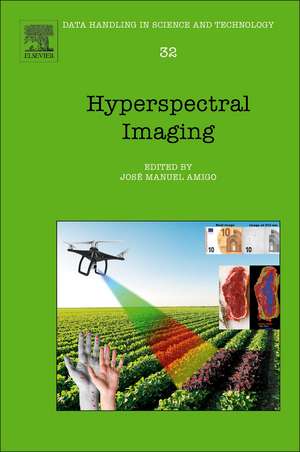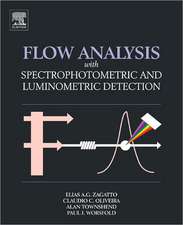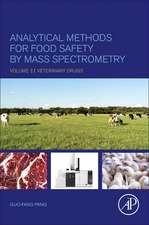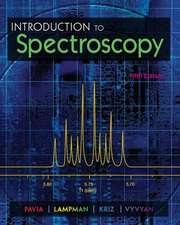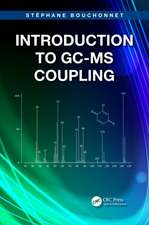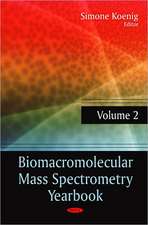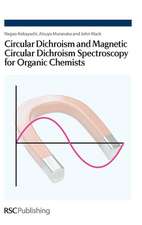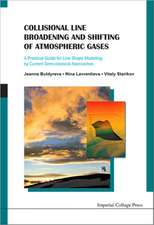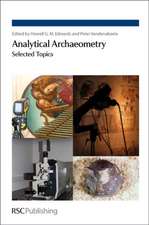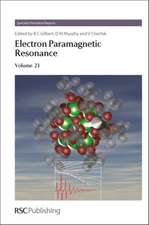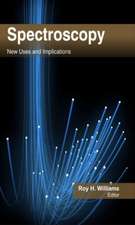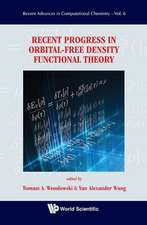Hyperspectral Imaging: Data Handling in Science and Technology, cartea 32
Jose Manuel Amigoen Limba Engleză Paperback – oct 2019
- Provides a comprehensive roadmap of hyperspectral image analysis, with benefits and considerations for each method discussed
- Covers state-of-the-art applications in different scientific fields
- Discusses the implementation of hyperspectral devices in different environments
Din seria Data Handling in Science and Technology
- 23%
 Preț: 1053.94 lei
Preț: 1053.94 lei - 27%
 Preț: 1765.52 lei
Preț: 1765.52 lei - 27%
 Preț: 1757.66 lei
Preț: 1757.66 lei - 27%
 Preț: 1371.81 lei
Preț: 1371.81 lei - 27%
 Preț: 1762.70 lei
Preț: 1762.70 lei - 27%
 Preț: 1277.61 lei
Preț: 1277.61 lei - 27%
 Preț: 1501.83 lei
Preț: 1501.83 lei - 20%
 Preț: 1648.82 lei
Preț: 1648.82 lei - 27%
 Preț: 1028.03 lei
Preț: 1028.03 lei - 24%
 Preț: 923.37 lei
Preț: 923.37 lei - 28%
 Preț: 808.91 lei
Preț: 808.91 lei - 20%
 Preț: 759.90 lei
Preț: 759.90 lei - 37%
 Preț: 761.10 lei
Preț: 761.10 lei - 29%
 Preț: 1013.94 lei
Preț: 1013.94 lei -

Preț: 1023.88 lei
Preț vechi: 1430.94 lei
-28% Nou
Puncte Express: 1536
Preț estimativ în valută:
195.95€ • 203.81$ • 161.76£
195.95€ • 203.81$ • 161.76£
Carte tipărită la comandă
Livrare economică 07-21 aprilie
Preluare comenzi: 021 569.72.76
Specificații
ISBN-13: 9780444639776
ISBN-10: 0444639772
Pagini: 800
Ilustrații: 120 illustrations (40 in full color)
Dimensiuni: 152 x 229 x 46 mm
Greutate: 1.05 kg
Editura: ELSEVIER SCIENCE
Seria Data Handling in Science and Technology
ISBN-10: 0444639772
Pagini: 800
Ilustrații: 120 illustrations (40 in full color)
Dimensiuni: 152 x 229 x 46 mm
Greutate: 1.05 kg
Editura: ELSEVIER SCIENCE
Seria Data Handling in Science and Technology
Public țintă
Scientists, academics, and graduate students in various disciplines working with hyperspectral images, including remote sensing, vegetation and crops, food and feed production, forensic sciences, biochemistry, medical imaging, pharmaceutical production, and art studiesCuprins
1. INTRODUCTION
1.1. Hyperspectral Images. From Remote sensing to bench top instruments. A general overview
1.2. Hyperspectral cameras. Types of hyperspectral cameras, radiations and sensors
2. ALGORITHMS AND METHODS
2.1. Pre-processing of hyperspectral images. Spatial and spectral issues
2.2. Hyperspectral data compression
2.3. Pansharpening
2.4. Unsupervised pattern recognition methods
2.5. Multivariate Curve Resolution
2.6. Non Linear Spectral un-mixing
2.7. Variability of the endmembers in spectral unmixing
2.8. Regression models
2.9. Classical Least Squares for Detection and Classification
2.10. Supervised Classification Methods in Hyperspectral Imaging - Recent Advances
2.11. Fusion of Hyperspectral Imaging and LiDAR for Forest Monitoring
2.12. Hyperspectral time series analysis: Hyperspectral image data streams interpreted by modeling known and unknown variations
2.13. Statistical Biophysical Parameter Retrieval and Emulation with Gaussian Processes
3. APPLICATION FIELDS
3.1. Hyperspectral cameras adapted to the applications. How and when
3.2. Applications in Remote Sensing - Natural Landscapes
3.3. Applications in Remote Sensing - Anthropogenic activities
3.4. Vegetation and crops
3.5. Food and feed production
3.6. Hyperspectral Imaging for Food related Microbiology Applications
3.7. Hyperspectral Imaging in Medical Applications
3.8. Hyperspectral Imaging as a part of Pharmaceutical Product Design
3.9. Hyperspectral imaging for artworks investigation
3.10. Growing applications of hyperspectral and multispectral imaging
1.1. Hyperspectral Images. From Remote sensing to bench top instruments. A general overview
1.2. Hyperspectral cameras. Types of hyperspectral cameras, radiations and sensors
2. ALGORITHMS AND METHODS
2.1. Pre-processing of hyperspectral images. Spatial and spectral issues
2.2. Hyperspectral data compression
2.3. Pansharpening
2.4. Unsupervised pattern recognition methods
2.5. Multivariate Curve Resolution
2.6. Non Linear Spectral un-mixing
2.7. Variability of the endmembers in spectral unmixing
2.8. Regression models
2.9. Classical Least Squares for Detection and Classification
2.10. Supervised Classification Methods in Hyperspectral Imaging - Recent Advances
2.11. Fusion of Hyperspectral Imaging and LiDAR for Forest Monitoring
2.12. Hyperspectral time series analysis: Hyperspectral image data streams interpreted by modeling known and unknown variations
2.13. Statistical Biophysical Parameter Retrieval and Emulation with Gaussian Processes
3. APPLICATION FIELDS
3.1. Hyperspectral cameras adapted to the applications. How and when
3.2. Applications in Remote Sensing - Natural Landscapes
3.3. Applications in Remote Sensing - Anthropogenic activities
3.4. Vegetation and crops
3.5. Food and feed production
3.6. Hyperspectral Imaging for Food related Microbiology Applications
3.7. Hyperspectral Imaging in Medical Applications
3.8. Hyperspectral Imaging as a part of Pharmaceutical Product Design
3.9. Hyperspectral imaging for artworks investigation
3.10. Growing applications of hyperspectral and multispectral imaging
